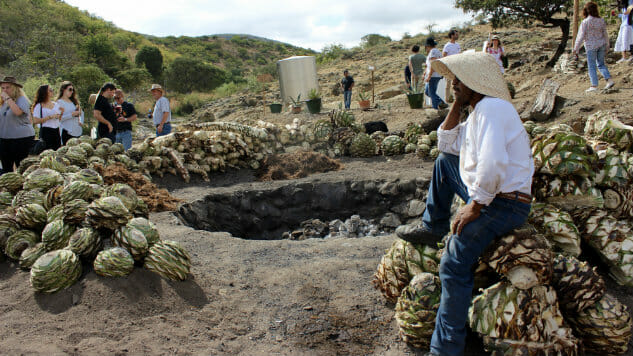
Alejandro Champion may be the Jesus of mezcal, with the gospel to match. The first time I encounter him, I have recently returned from a long trip through Mexico and Cuba. I am sitting at the bar at Roberta’s in Bushwick, drinking a Wölffer dry rosé cider, eating a Speckenwolf pizza and reading a book about moving to Mexico that I picked up during a mezcal trip to Oaxaca. A young man walks in and asks for the owners, claiming that he owns a mezcal company. He looks too young to own a liquor brand. “What’s your mezcal company,” I ask. “Mezcal Unión,” he says. “I’ve been to your palenque in San Baltazar,” I say incredulously. “We emailed.”
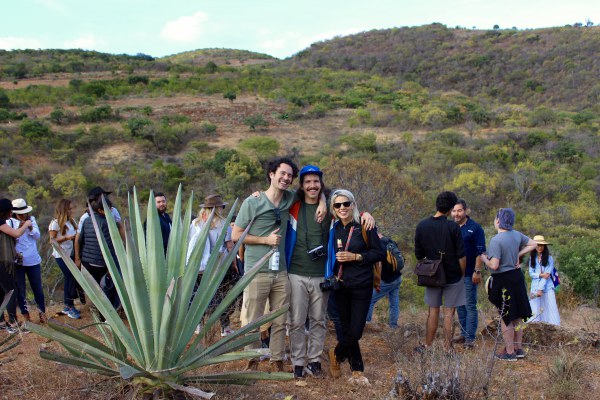
Alejandro Champion, center, with friends in the hills near the Mezcal Unión palenque in San Baltazar Guelavila.
Champion, as he is called, spends his time globetrotting the world, preaching the gospel of his own religion: mezcal. Determined, charismatic and fervent, Champion has doggedly visited most of the beloved bars of the urban American cocktail drinker, with two complementary bottles of Mezcal Unión in his bag — El Joven and El Viejo — for owners and bartenders to taste.
I often suspect I’m just a step removed from Champion’s trail. One week there is no Mezcal Unión at the hot new cocktail bar in my neighborhood. The next week, the striking blue-flecked bottle is sitting on the shelf, plain as day. Was mezcal’s disciple just here?
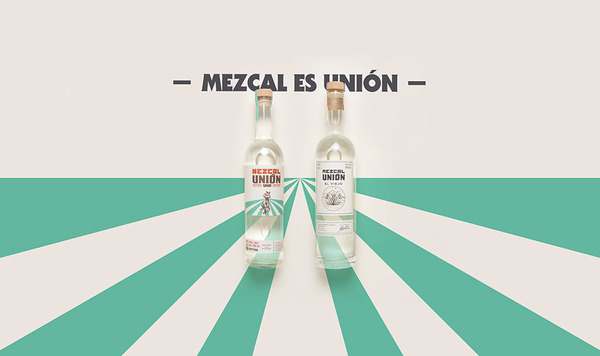
Image courtesy of Mezcal Unión
To the legion of mezcal lovers outside of Mexico, mezcal is an expensive, high-quality spirit to be carefully parsed and analyzed. You may have noticed from the mezcal bars multiplying in your urban neighborhood that it is quickly obtaining cult status. I made the mistake of first trying it in cocktails, and besides a smokiness, couldn’t discern what was so exciting about it. Tasting several mezcals on their own, from a local small-batch shop, Duke’s Liquor Box, changed my mind.
Because it is made with so many varieties and methods of production (including one method using a smoked chicken breast to neutralize fruity tastes), mezcals differ wildly. Though Champion is well-versed in the technicalities of mezcal’s production, it is the mystical and community aspects that draw him in. He speaks freely about these mystical aspects — including the agave goddess, Mayahuel. “In each agave plant is the bosom of the goddess Mayahuel,” he says, telling the legend of the poor goddess who was burned to ashes by her jealous grandmother, Tzitzimitl, and then planted in the ground by her lover Quetzlcoatl, regenerating into the agave plant. “Thousands of families still believe that every agave plant contains this bosom of Mayahuel, and that it is the path to spiritual connection.”
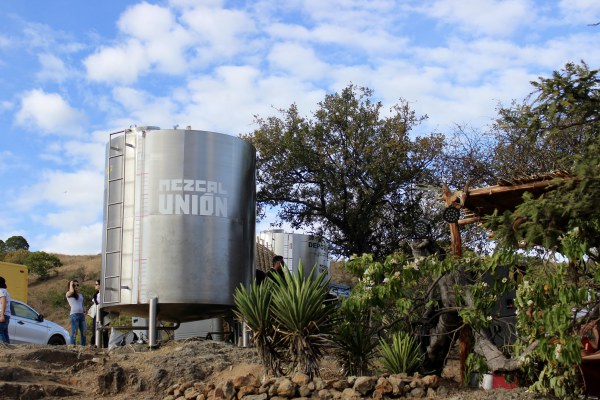
Our chance meeting ends with him floating the idea of a possible trip to visit the same palenque, which he says is much more developed. A few months later, it’s really happening. I touch down in Oaxaca during Dia de Los Muertos, where the Catrinas, those regal ladies of death with their skeletal faces and stately hats, are waiting to greet me at our hotel, corseted in long gowns of purple and black. One stands in a belled skirt made entirely of corn husks, ready to enter the world of Pitao Cozobi, the Zapotec god of maize.
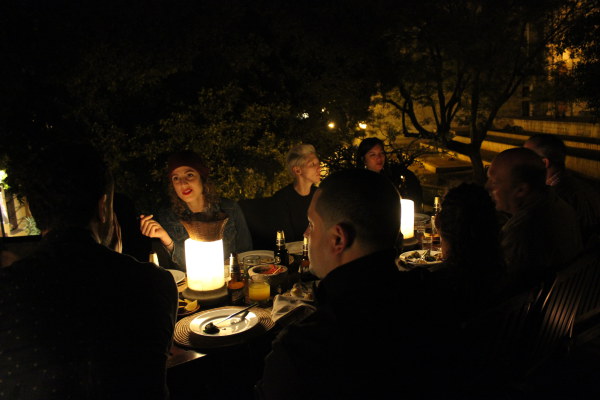
On our second night, bellies full of green pozole, my friends and I visit a graveyard in Tlalixtac. Marigolds are heaped upon graves, full bands of accordions and guitars celebrate the lives of the dead, and families laugh and drink homemade mezcal. A processional wanders through the food cart-laden avenues, burning candles, wielding crosses and photos of beloved deceased family members, and singing. It seems indeed possible that Mayahuel is here when the potent homemade mezcal sets into my brain, sending it buzzing with music. It’s apt preparation to taste the artisanal version at the fount of its production the next day.

We visit the new palenque, or mezcal processing farm, in San Balthazar Guelavila, on Saturday. When I last saw it in May, it was just a few distilling tanks behind a smoking pit and a mashing pit, with a table set aside for the Zapotec workers to cool their brows.

It is now replete with long banquet tables, covered with a roof to shield us more from sun than rain, and ready for a party.
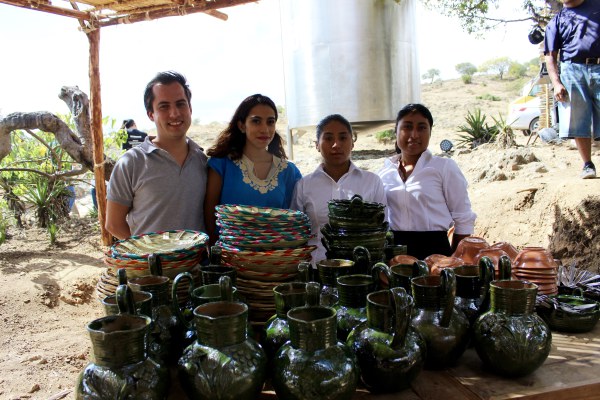
The long tables are piled high with bottles of mezcal and appetizers. We are cooked quesadillas of tender carne asado, cecina and chorizo. All the servers besides those who already work for Mezcal Unión have been hired from local Zapotec villages.

Behind us the hills slope gently, green and brown and tan, with brush and spiky bits that, when we get hike into them, sharpen as espadin, cirial, tobala — all different varieties of different species of agave. Jimena Borobia is our warm welcome guide throughout the weekend, introducing us to the founding members of Unión.
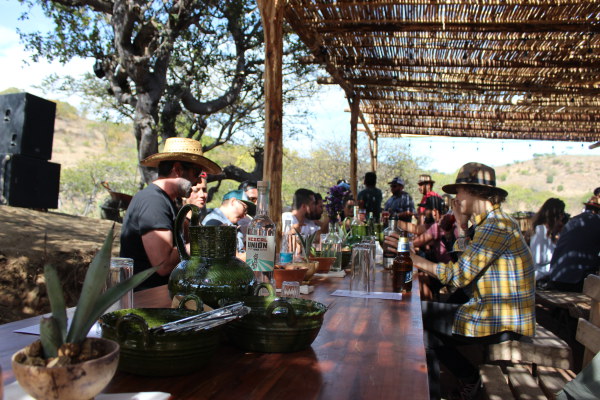
The 64 guests who have come to the mountains to be with Mezcal Unión are from seven different cities across the United States, including New York, Austin, San Francisco, Los Angeles and Miami. We are bartenders and bar owners; we are cocktail designers; we are journalists. It’s a (slightly) pre-Trumpian universe, and we’re unaware that in one week our country will elect a fascist kleptocrat who will tell our Mexican friends they will pay for a wall that they will never pay for.
We gather around a huge smoking pit ringed by bulbous, spiky pinas of different shapes and sizes as Champion raises his voice.

“This is San Baltazar Guelavila, Oaxaca. This is where Mezcal Unión gave birth. Pedro — Pedrito Hernandez,” Champion says, motioning to a handsome Zapotec man in a purple polo and a straw hat, who refuses to come forward into the spotlight. Champion gestures toward Hernandez, his master mezcalier, whose family has been making mezcal in Oaxaca for many generations. “His was the first Zapotecan family that we ever partnered up with to make the story of Unión come true.” I can tell by the reverent timbre in Champion’s voice how much Hernandez and his family mean to him.

Mezcal Unión’s namesake comes from its union of multiple mezcal cooperatives. Unión works with seven different palenques around Oaxaca, uniting previously separate worker groups. It is this essential bond that lies at the heart of their name and their mission.
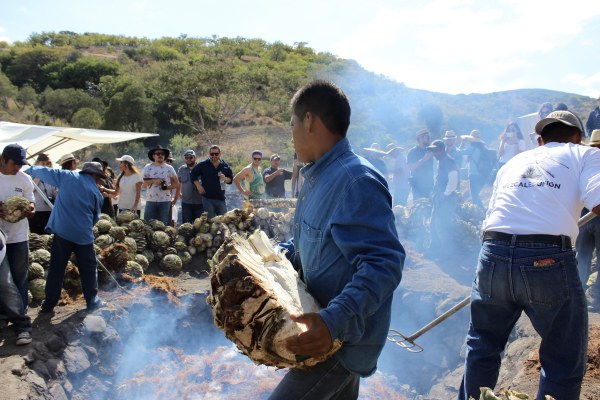
“Our core as a company is to unite mezcal’s indigenous mezcal families and support them to get their workshops started,” Champion says ardently. “Our goal is to create a fair trade model and support sustainability and even social development so that in the long term we generate fair jobs. We own the brand, and the production is owned by the families.”

Champion then urges us to all join the workers in throwing the pinas into the smoking pit. It’s one of the most beautiful sights I’ve ever seen, but I’m almost too shy to pick up a pina. It feels sacred. I’m intimidated, and unsure.

The Zapotec workers are picking up long, skinny cirial piñas and the rounder espadins. I tentatively pick up an espadin. It is heavy, and lifelike, like a dinosaur egg. I drop it carefully in, laughing at my own hesitancy that the sturdy piña will break like an egg. I throw one in with more enthusiasm, sending it into the agave afterworld.

I take photos, and marvel at the sight and smell of the smoke rising out of the pit. I am told they are encino oaks, and think back to the sweet wood at the rural shack in northern Jamaica that made my jerk pork taste so damn good. It’s all in the smoke. I muse that Texan and Jamaican pitmasters alike would love taking part in this process, and having some of their own barbecue with this mezcal — there’s a similar sort of mythology at play in both barbecue and mezcal, hidden in the deep smoke. The workers begin to cover the smoke pit.

I pick up and chew on the roasted fruit of a black and ruddily tan pina. It is so sweet and fibrous, it reminds me of sugarcane, but the taste is smokier and more pungent — irresistible. I would eat these roasted roots every day. It could become an addiction.

The workers cover the smoking pit. Later, a horse attached to a tahona, a stone wheel, will smash the smoked piñas by walking in a circle outside the pit. They will be fermented with natural yeast and then distilled twice in a copper pot.
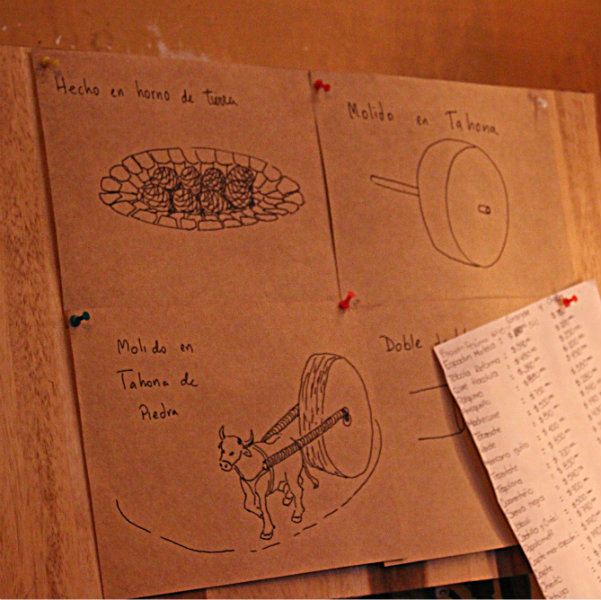
Tahona illustration by Oaxaca mezcal bar Mezcalerita
I chat with a few of the Zapotec guys who work at the palenque after we’ve finished chucking everything in the pit. Through translation, a Zapotec worker tells me that without Mezcal Unión, he wouldn’t be able to make enough money to support his family.
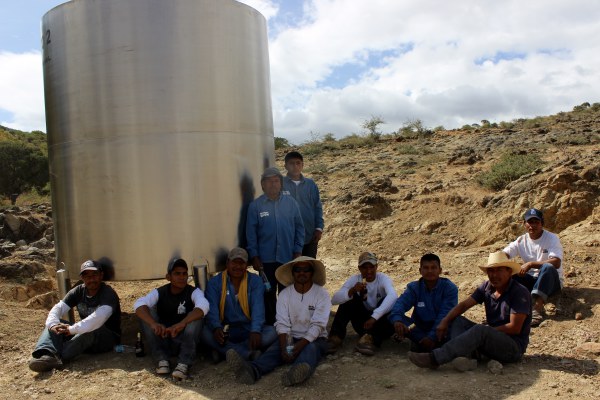
Mexican laws were changed in 2016 so that small quantities of mezcal would not be able to carry the name “mezcal” legally (pretty much everyone in the mezcal world was opposed to the NOM 199 law). Certainly, the families’ products would not have international reach without Unión’s brand, and wouldn’t show up at your local cocktail bar.
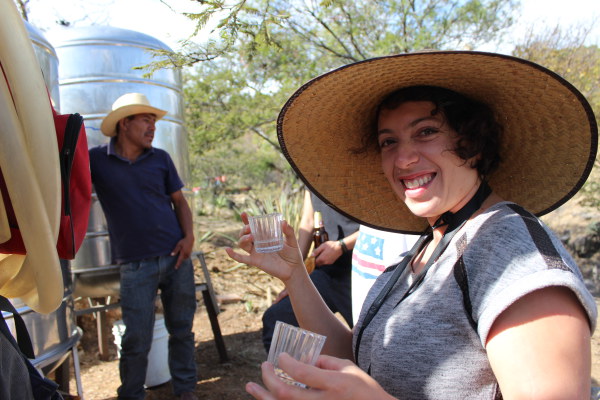
We soon taste the fruits of the workers’ labor. Mayahuel is a many-flavored mother. Unión makes two brands of mezcal with its three varieties: its younger, El Joven, sweet, fruity and a bit brash, with green apple and pear notes from its espadín and earthy, herbal and citrus notes from the cirial, and its more mature cousin, El Viejo, smoother and composed of espadin and 14-year-old tobala, the wild agave that must be carefully preserved and not overharvested.
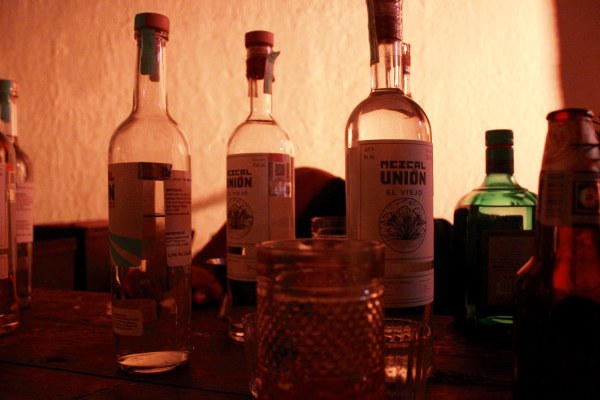
I take a small glass of El Joven along with us as we hike into the mountains, and revel in its intensity. I feel more alive — am I buzzing with energy, or is it the fresh, heady mountain air?

We pass a vaquero herding his cows and a processional of burros carrying firewood. The sun begins to set, faint fairy blue and then a deeper blue that burns like the center of a pilot light. We sit on the rocks and watch the sun go down, taking photos, tipsy, laughing, making new friends. As we head back to the palenque, we can see a bonfire being lit on the hill below the banquet.
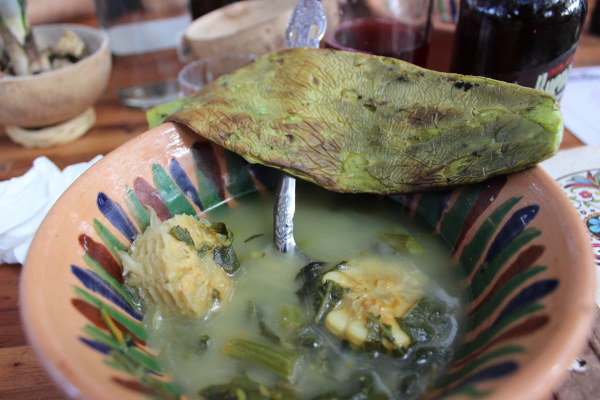
We are still hungry. We fall, ravenous, upon a feast, devouring calabaza elote soup with an exquisitely savory broth and a side of nopal, and more quesadillas. We dance, cumbia and salsa blaring from the DJ, drinking mezcal cocktails with aqua de jamaica, then pure mezcal.
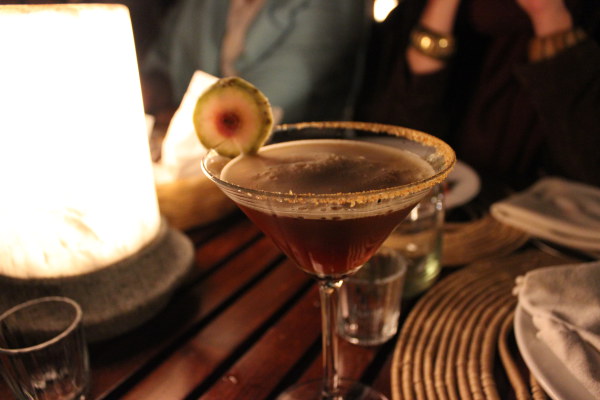
And then the sound of drums appears. We look up and see a giant male puppet and a giant female puppet heading down the mountain curve toward us, spinning and dancing. A group of young teenage boys comes after them bearing drums and horns. They stop and a young boy, maybe 15, begins to sing about a love he has probably only dreamed of. Mezcal, however, he probably knows at his age.
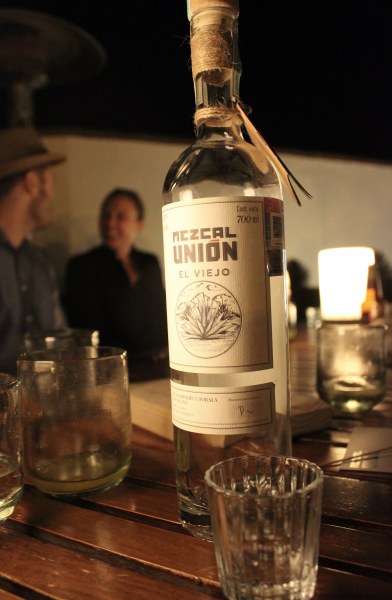
Like any food product, visiting the mezcal source has given me a deeper understanding of it. I now cannot drink a mezcal without thinking of that walk into the hills. I no longer want it in a cocktail, and think of it more like wine, with a terroir and an unadulterated connection to the land.
Not even with orange, not even with sal de gusano, the lovely, meaty worm salt that can stand up to mezcal’s smoke — I only want to taste mezcal, and with that taste, its origin. (But I will take some garlic chile chapulines if you offer.)
Dakota Kim is Paste’s Food Editor. You can tweet her your mezcal photos, with or without worm salt, at @dakotakim1.